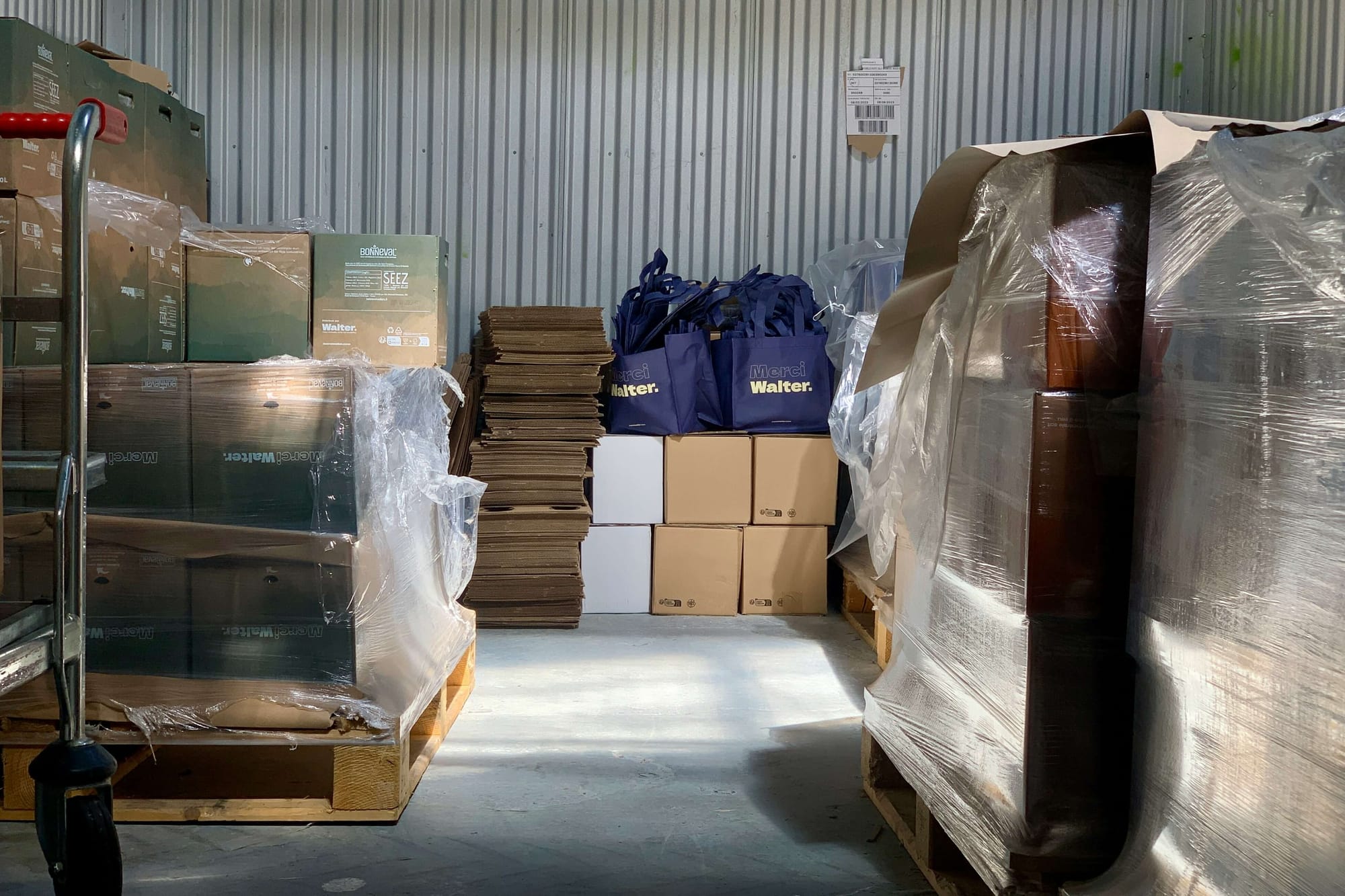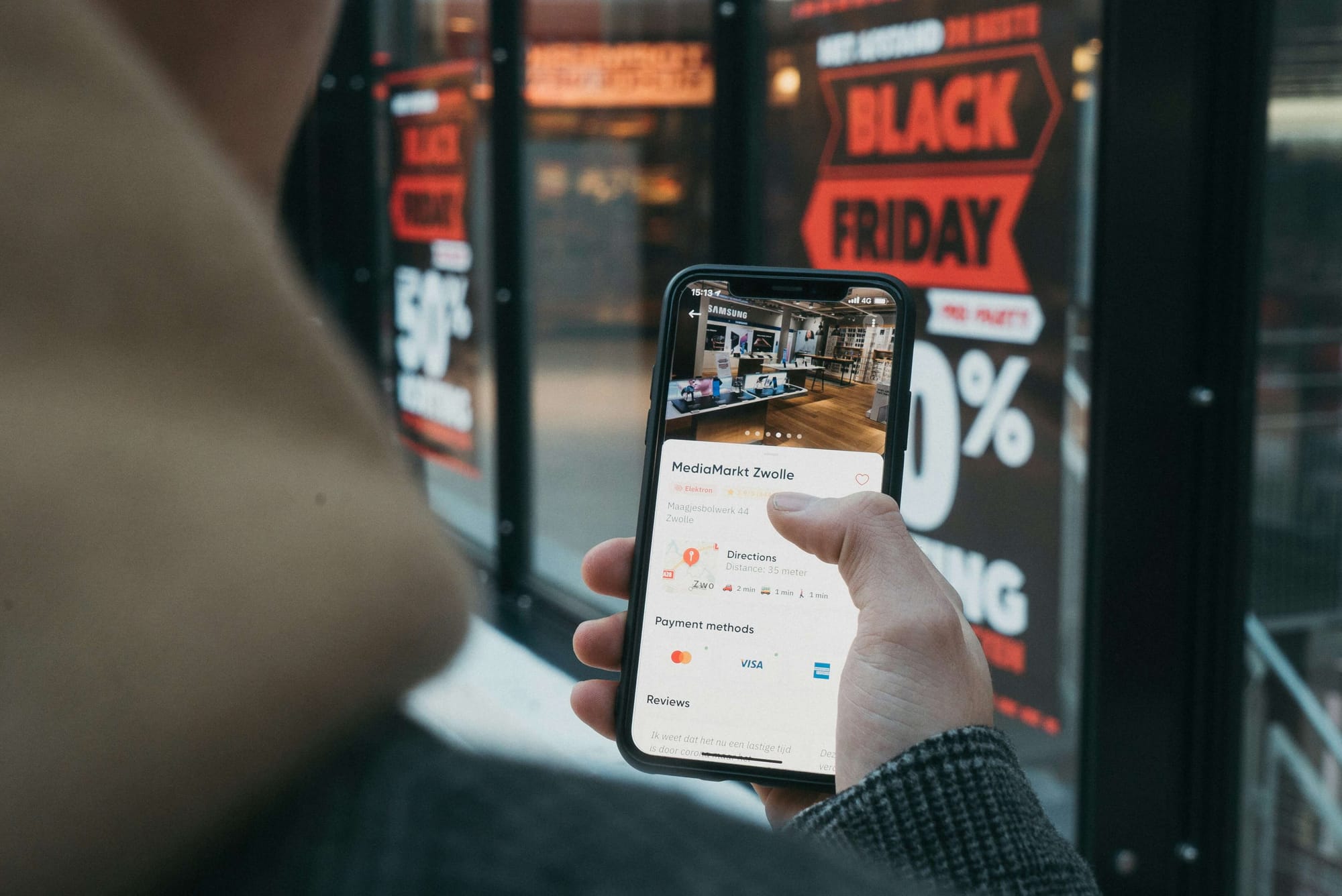In today’s fast-paced e-commerce landscape, customers expect faster deliveries, accurate order tracking, and seamless service at every touchpoint. To meet these growing expectations, many online retailers are turning to Third-Party Logistics (3PL) integration—a powerful strategy that streamlines operations and enhances logistics efficiency. According to recent research, 86% of shippers report improved customer service, and 91% experience higher customer satisfaction after partnering with 3PL providers. These figures highlight how leveraging 3PL integrations is no longer just an option—it’s a necessity for competitive e-commerce growth.
The global 3PL market is projected to exceed $1.4 trillion by 2025, driven by rising demand for scalable and tech-enabled logistics solutions. Simultaneously, the 3PL software market is expected to reach $2.8 billion by 2035, emphasizing the critical role of technology in automating complex supply chain operations. This shift reflects a growing reliance on digital platforms that integrate every part of the logistics chain—from warehousing and inventory management to shipping and last-mile delivery—into a single, efficient ecosystem.
For e-commerce businesses, integrating with a 3PL provider goes far beyond outsourcing logistics. It enables real-time visibility, data synchronization, and end-to-end automation across multiple channels. By bridging the gap between online stores, warehouses, and delivery partners, 3PL integration helps businesses minimize delays, reduce manual errors, and deliver consistent customer experiences—key factors in maintaining brand loyalty in a crowded online marketplace.
This is where Deskera ERP becomes a game-changer. Designed to unify core business functions, Deskera ERP simplifies 3PL integration by connecting your e-commerce platforms, inventory systems, and logistics partners in one intelligent dashboard.
With features like real-time inventory tracking, automated order processing, and AI-driven analytics, Deskera empowers businesses to streamline their logistics workflows, cut operational costs, and scale with confidence. Whether you’re managing multiple fulfillment centers or optimizing delivery performance, Deskera ensures your e-commerce operations run smoothly from order to delivery.
What Is 3PL Integration for E-commerce?
3PL integration for e-commerce refers to the seamless connection between your online store and a third-party logistics (3PL) provider’s system to automate and optimize the flow of order, inventory, and shipping information.
This integration enables your e-commerce platform to communicate directly with your logistics partner, ensuring that every stage of the fulfillment process—from order placement to final delivery and returns—is efficiently managed in real time.
When your e-commerce store is integrated with a 3PL, online orders are automatically routed to the logistics provider for prompt fulfillment. The 3PL system then updates inventory levels in real time, reflecting accurate stock availability on your online storefront.
Additionally, it helps with generating shipping labels, providing live tracking details, and handling customer returns—all without requiring manual intervention. This level of automation not only reduces errors but also significantly improves order accuracy and delivery speed.
The depth of integration can vary depending on your chosen 3PL and e-commerce platform. Some 3PLs offer built-in integrations with popular platforms like Shopify, WooCommerce, or Magento, while others rely on API-based connections for greater customization. Depending on the 3PL’s business model—asset-based or non-asset-based—they may manage various logistics functions, including transportation, warehousing, packing, inventory forecasting, order fulfillment, and reverse logistics.
Ultimately, integrating a 3PL into your e-commerce strategy is not just about outsourcing logistics—it’s about enhancing operational efficiency and agility. By leveraging your 3PL’s expertise and technology, your business can focus on core areas such as product innovation, marketing, and customer engagement, while ensuring that every order is fulfilled quickly, accurately, and cost-effectively.
Key Benefits of 3PL Integration for E-commerce
As e-commerce businesses expand, managing logistics manually becomes increasingly complex and time-consuming. Integrating a Third-Party Logistics (3PL) provider with your e-commerce platform allows you to automate and optimize your entire fulfillment process—from order placement to delivery and returns. Beyond operational convenience, this integration delivers strategic advantages that enhance efficiency, accuracy, and customer satisfaction.
Below are the most impactful benefits of 3PL integration for online retailers.
1. Improved Order Accuracy and Fulfillment Speed
When your e-commerce store is directly connected to a 3PL system, orders are instantly transmitted to the warehouse for processing. This automation eliminates manual data entry errors and ensures faster order turnaround times. Real-time synchronization enables accurate shipping updates, ensuring customers receive their products on time—boosting reliability and brand trust.
2. Cost Savings and Operational Efficiency
3PL providers help reduce costs associated with warehousing, transportation, and labor by optimizing routes and utilizing economies of scale. Integration further improves cost efficiency through automated order management, inventory updates, and invoicing—allowing your team to focus on growth rather than manual logistics tasks.
3. Scalability and Flexibility
A 3PL integration allows your business to adapt to demand fluctuations without investing in additional infrastructure. Whether it’s handling seasonal spikes, flash sales, or international expansion, your logistics partner can quickly scale operations up or down. This flexibility ensures consistent performance, even during periods of rapid growth.
4. Enhanced Inventory Visibility and Control
Through 3PL integration, you gain real-time insights into your stock levels, order status, and delivery timelines across multiple channels. This visibility enables better inventory forecasting and reduces risks like stockouts or overstocking. Having accurate data readily available also supports smarter procurement and demand planning decisions.
5. Better Customer Experience
Today’s consumers expect seamless post-purchase experiences. 3PL integration enhances customer satisfaction by enabling faster deliveries, real-time order tracking, and smoother returns. Automated updates keep buyers informed at every step, strengthening brand loyalty and encouraging repeat purchases.
6. Data-Driven Decision Making
Integrated 3PL systems generate valuable analytics related to delivery performance, inventory movement, and customer buying patterns. These insights help businesses identify inefficiencies, optimize inventory turnover, and plan marketing campaigns more effectively—driving smarter, data-backed decisions.
7. Streamlined Returns Management
Efficient return handling is a major competitive advantage in e-commerce. With 3PL integration, the return process becomes more transparent and faster. Returned products are tracked and restocked automatically, improving both operational speed and customer satisfaction while reducing reverse logistics costs.
8. Access to Advanced Technology and Expertise
Partnering with a 3PL gives your business access to cutting-edge logistics technologies—like route optimization tools, RFID tracking, and warehouse automation systems—without the heavy upfront investment. Moreover, 3PL providers bring logistics expertise that helps streamline operations, ensuring compliance with shipping regulations and carrier requirements.
9. Multi-Channel Fulfillment Support
As e-commerce businesses diversify across multiple marketplaces and sales channels, managing fulfillment can get complicated. A 3PL integration centralizes operations by connecting all platforms—such as Shopify, Amazon, and WooCommerce—to one unified logistics system. This ensures consistent order fulfillment and real-time updates across every channel.
10. Improved Compliance and Risk Management
3PL providers are well-versed in customs, tariffs, and regional shipping regulations. Integrating with a 3PL ensures that your international shipments comply with all necessary legal and logistical requirements, reducing risks like delays, penalties, or damaged goods during transit.
11. Focus on Core Business Functions
By outsourcing logistics operations and integrating your systems with a reliable 3PL, your internal teams can focus on high-value tasks—such as product development, marketing, and customer engagement—rather than warehouse or shipping management. This leads to better overall business growth and innovation.
Common Challenges for eCommerce Without 3PL Integration
Running an eCommerce business without 3PL integration can quickly lead to operational inefficiencies, rising costs, and inconsistent customer experiences. Manual processes, delayed updates, and fragmented systems make it difficult for businesses to scale smoothly. Below are the key challenges companies often face when fulfillment operations are not connected to a reliable 3PL system.
1. Slow and Error-Prone Order Processing
Without integration, order details must be manually transferred to the logistics provider, increasing the chances of errors and delays. Mistyped addresses, missing items, and slow processing can frustrate customers and impact overall delivery performance. As order volumes grow, manual workflows become even more inefficient and difficult to manage.
2. Lack of Real-Time Inventory Visibility
When inventory isn’t synced automatically, stock updates can lag, leading to overselling or stockouts. Businesses may continue accepting orders for unavailable items or fail to replenish fast-moving products on time. This lack of visibility disrupts sales planning and negatively affects customer satisfaction and brand trust.
3. Inefficient Multichannel Management
Selling on multiple platforms like Amazon, Shopify, and marketplaces becomes challenging without a centralized system. Each channel may show different inventory levels or order statuses, creating confusion and increasing the workload for teams. This fragmentation often results in fulfillment delays and inconsistent customer experiences.
4. High Operational and Labor Costs
Manual communication with logistics partners requires significant time and workforce. Staff must handle order uploads, inventory checks, tracking updates, and issue resolution manually. Over time, these repetitive tasks drive up labor expenses and reduce overall productivity, making the business less cost-efficient.
5. Increased Risk of Shipping Delays
When order data doesn’t instantly reach the 3PL, shipments may be delayed or dispatched late. Slow communication and missing information directly impact delivery timelines. In competitive eCommerce markets where speed matters, delayed shipping can lead to poor reviews and reduced customer loyalty.
6. Poor Customer Experience Due to Inaccurate Tracking
Without integrated tracking updates, customers may receive outdated or incorrect shipment information. This creates confusion and leads to higher support inquiries. When customers feel uninformed or uncertain about their orders, it reduces satisfaction and diminishes confidence in the brand’s reliability.
7. Difficulty Scaling During Peak Seasons
Sales spikes during festive periods, promotions, or viral campaigns can overwhelm manual processes. Without a scalable 3PL integration, businesses struggle to handle sudden increases in order volume. This often results in delayed shipments, inventory mismatches, and failed deliveries during the most profitable times.
8. Limited Data Insights for Decision-Making
Manual systems make it difficult to track fulfillment performance, returns, inventory movement, and delivery accuracy. Without consolidated reports, businesses lack the insights needed to forecast demand, optimize SKUs, and identify bottlenecks. Poor visibility into data can hinder long-term planning and reduce competitiveness.
Key Technologies Powering 3PL Integration for eCommerce
Seamless 3PL integration is made possible by a combination of modern technologies that connect eCommerce platforms, ERPs, and logistics systems in real time. These technologies eliminate manual work, improve data accuracy, and accelerate the entire fulfillment cycle. Below are the core technologies that enable fast, automated, and scalable 3PL integration for eCommerce businesses.
1. Application Programming Interfaces (APIs)
APIs form the backbone of modern 3PL integrations. They enable real-time data exchange between eCommerce stores, ERPs, and logistics systems. With APIs, order details, tracking updates, shipping labels, and inventory levels sync instantly—reducing errors and accelerating fulfillment.
2. Electronic Data Interchange (EDI)
EDI technology allows structured data exchange between businesses and 3PL providers. It is widely used for transmitting purchase orders, invoices, shipping notifications, and inventory updates. EDI ensures secure, standardized communication, especially for high-volume enterprise operations.
3. Warehouse Management Systems (WMS)
A 3PL’s WMS plays a critical role in executing fulfillment tasks. It manages storage, picking, packing, and dispatch activities efficiently. When integrated with eCommerce platforms, a WMS ensures accurate stock visibility and faster order turnaround times.
4. Order Management Systems (OMS)
An OMS centralizes order processing from multiple sales channels. It automatically routes orders to the right warehouse or 3PL facility based on inventory availability, customer location, or service levels. OMS integration reduces delays and streamlines multichannel fulfillment.
5. Transportation Management Systems (TMS)
A TMS helps 3PLs plan, optimize, and track shipments. It selects the best carriers, calculates freight costs, manages routes, and tracks deliveries. When connected to your store, it ensures customers receive timely tracking updates and accurate delivery estimates.
6. Automation and Robotic Systems
Modern 3PLs use automation—such as robotic picking systems, conveyor belts, barcode scanners, and automated sorting tools—to speed up fulfillment. Integration ensures that as soon as an order is received, automated systems begin processing it without manual intervention.
7. Cloud-Based Platforms
Cloud technology enables 24/7 accessibility, real-time syncing, and flexible scaling. Cloud-based ERP and fulfillment systems eliminate data silos, improve collaboration, and support fast-growing eCommerce businesses with distributed operations.
8. IoT and Smart Tracking Technologies
IoT devices, RFID tags, and GPS-based sensors help 3PLs track inventory and shipments with precision. These technologies provide real-time updates on product movement, warehouse conditions, and delivery location—enhancing transparency for both businesses and customers.
Why Should You Consider Using a 3PL Integration for eCommerce?
As your eCommerce business expands, managing inventory, fulfilling orders, and maintaining fast delivery times can become increasingly challenging. 3PL integration helps bridge this gap by connecting your online store and operational systems directly with third-party logistics partners. This not only boosts efficiency but also ensures your business can scale smoothly without compromising customer experience. Below are the key reasons why you should consider adopting 3PL integration.
1. To Handle Sudden or Rapid Demand Surges
If your business experiences unexpected spikes in order volume—due to marketing campaigns, festive sales, or viral products—it can become difficult to maintain accuracy and timely delivery. A 3PL is built to handle high-volume fulfillment and can easily scale operations to meet increased demand. Integration ensures orders flow instantly to your 3PL, making it easier to meet customer expectations during peak times.
2. To Overcome Limited Inventory and Warehouse Space
Growing businesses often run out of space to store products, leading to cluttered operations and rising storage costs. A 3PL provides access to professional warehousing without requiring you to invest in additional locations. With integration, you gain real-time visibility into distributed inventory across multiple warehouses, helping you optimize stock levels and reduce overhead costs.
3. To Manage High Daily Order Volumes Efficiently
If you’re already fulfilling a consistently high number of orders each day, manual processes can slow you down and cause errors. 3PLs bring automation, streamlined workflows, and experienced staff to handle large volumes with precision. Integration frees up internal manpower, reduces processing time, and ensures orders are dispatched quickly and accurately.
4. To Deliver a Better Customer Experience
Customer satisfaction depends heavily on how fast and accurately you can deliver orders. 3PLs specialize in next-day shipping, multi-carrier strategies, zone skipping, and reliable delivery processes. With integration, tracking updates are synced automatically, reducing customer inquiries and enhancing transparency. A smoother fulfillment process leads to better reviews, repeat orders, and stronger brand loyalty.
5. To Expand Seamlessly into International Markets
Entering new countries requires access to international carriers, customs expertise, and global warehousing. A 3PL partner often has a well-established network of international logistics providers. Integration enables efficient cross-border shipping, faster delivery timelines, and simplified operations—making global expansion far more achievable and cost-effective.
6. To Manage Increasingly Complex Orders
As your product catalog grows, order requirements may become more specialized. Some items may need temperature-controlled storage, fragile handling, or specific carriers. Other orders may involve bundles, multi-item packs, or special packaging. A 3PL has the technology, experience, and carrier partnerships to handle such complex orders efficiently. With integration, the correct order instructions are automatically communicated, reducing errors and processing time.
7. To Reduce Operational Costs and Improve Efficiency
Outsourcing logistics to a 3PL eliminates the need for hiring additional staff, expanding warehouse space, or investing in fulfillment technology. Integration also reduces manual work like data entry, order uploads, and inventory checks. This leads to lower labor costs, fewer mistakes, and a more streamlined operational workflow.
8. To Focus More on Growth and Less on Logistics
By removing the burden of day-to-day fulfillment tasks, you can dedicate more time to product development, marketing, customer engagement, and scaling your business. 3PL integration ensures the backend runs smoothly, allowing you to focus on growing your brand instead of managing logistics complexities.
Best Practices for Effective 3PL Integration
While 3PL integration can transform your e-commerce logistics operations, success depends on careful planning and execution. A well-structured integration ensures smooth data flow, improved visibility, and long-term scalability.
To make the most of your 3PL partnership, businesses must follow a set of best practices that align technology, communication, and performance management.
Below are key strategies to ensure effective and seamless 3PL integration for your e-commerce operations.
1. Choose the Right 3PL Partner
Selecting the right 3PL provider is the foundation of successful integration. Evaluate potential partners based on their technology capabilities, fulfillment accuracy, shipping network, and experience in handling your product type. Look for a 3PL that offers flexible integration options—such as APIs or pre-built connectors—with your e-commerce platform or ERP system. A reliable partner will align with your business goals and support future expansion.
2. Ensure System Compatibility
Before integration, verify that your e-commerce, ERP, and warehouse management systems can communicate effectively with the 3PL’s technology. System compatibility ensures seamless data exchange for orders, inventory levels, and shipment tracking. Opt for 3PLs that provide robust APIs or middleware solutions, reducing manual interventions and data mismatches across platforms.
3. Automate Data Flow and Key Processes
Automation is central to effective 3PL integration. Automate repetitive tasks such as order transfers, inventory updates, shipping notifications, and billing to minimize errors and save time. Automation also enhances accuracy in fulfillment, providing real-time visibility for both your business and your customers.
4. Maintain Clear and Consistent Communication
Strong communication between your business and the 3PL provider is critical. Establish regular check-ins and clearly define roles, expectations, and escalation processes. Transparent communication helps quickly resolve operational challenges and keeps both teams aligned on order volumes, delivery timelines, and performance metrics.
5. Monitor KPIs and Performance Metrics
Track key performance indicators (KPIs) such as order accuracy rate, delivery time, return rate, and customer satisfaction scores. These metrics help measure your 3PL’s efficiency and identify areas for improvement. Regular performance reviews ensure that your logistics operations remain aligned with customer expectations and business objectives.
6. Start with a Phased Implementation
Instead of integrating your entire e-commerce system at once, begin with a pilot phase—perhaps focusing on a specific product line or region. This controlled rollout allows you to identify and resolve technical or operational issues early. Once performance stabilizes, you can scale the integration across your full inventory and sales network.
7. Provide Adequate Team Training
Even with automation in place, your internal team should understand how the 3PL integration works. Train staff on how to interpret logistics dashboards, track shipments, and manage exceptions. Well-trained teams can identify potential issues quickly and maintain efficient workflows during peak seasons or system updates.
8. Establish Real-Time Alerts and Exception Handling
Set up automated alerts for critical events such as delayed shipments, low inventory, or failed order syncs. Proactive exception management helps address problems before they impact customers. This not only maintains service quality but also minimizes disruptions in your order fulfillment process.
9. Regularly Update and Optimize the Integration
Technology and logistics requirements evolve rapidly. Periodically review your integration setup to ensure it remains compatible with software updates, new e-commerce channels, and business growth. Collaborate with your 3PL to implement improvements, update APIs, and enhance reporting features for continued performance optimization.
10. Leverage ERP Systems for Unified Management
Using an ERP platform like Deskera ERP simplifies 3PL integration by connecting your e-commerce, inventory, and logistics data in one unified dashboard. Deskera enables real-time tracking, automated data synchronization, and comprehensive analytics, ensuring your operations remain agile and insight-driven. By centralizing information, businesses can make faster decisions, minimize errors, and streamline collaboration with their 3PL partners.
How to Choose the Right 3PL Partner for Your eCommerce Business
Choosing the right 3PL partner is a critical decision that directly impacts your delivery speed, customer satisfaction, and overall operational efficiency. The ideal partner should align with your business goals, support your growth, and offer the technology needed for seamless integration. Here are the key factors to consider when selecting the best 3PL provider for your eCommerce brand:
1. Evaluate Their Technological Capabilities
Modern eCommerce demands real-time visibility and automation. Look for a 3PL with robust API or EDI integration options, a strong Warehouse Management System (WMS), and reliable tracking tools. A tech-enabled provider ensures seamless syncing of orders, inventory, and shipping updates across all your platforms.
2. Assess Their Experience in Your Industry
Choose a 3PL that understands your product category — whether it's fashion, electronics, beauty, FMCG, or bulky goods. Industry-specific experience means they know how to handle product sensitivities, storage needs, order patterns, and packaging standards.
3. Check Their Warehouse Locations and Coverage
Your 3PL’s warehouse network determines delivery speeds and shipping costs. Select a partner with fulfillment centers close to your key customer regions. Wider geographic coverage helps reduce transit times, lower shipping expenses, and improve service levels.
4. Review Their Scalability and Flexibility
Your 3PL should be able to handle seasonal spikes, big promotions, product launches, and sudden order surges. Flexible storage capacity, staffing, and automated systems ensure that your operations scale smoothly as your business grows.
5. Understand Their Pricing Structure
Different 3PLs offer various pricing models — some charge per order, others per storage unit, and some follow hybrid pricing. Make sure the cost structure is transparent, scalable, and aligned with your revenue margins. Beware of hidden fees like long-term storage or custom handling charges.
6. Examine Their Fulfillment Speed and Accuracy Rates
A good 3PL should maintain high order accuracy and quick turnaround times. Ask for KPIs such as picking accuracy, same-day shipping percentage, and delivery performance. These metrics give insight into how reliable and efficient the provider truly is.
7. Analyze Their Return Management Capabilities
Returns are a major part of eCommerce. Ensure your 3PL can handle inspections, restocking, refurbishing, and customer communication efficiently. Smooth returns processing helps maintain customer satisfaction and reduces operational headaches.
8. Consider Their Customer Support Quality
Choose a partner that offers responsive, knowledgeable, and proactive support. You need a team that can troubleshoot issues, provide timely updates, and collaborate closely with your operations and customer service teams.
9. Look for Value-Added Services
Some 3PLs offer additional services like custom packaging, kitting, subscription box assembly, quality checks, or branded inserts. These can significantly enhance your customer experience and differentiate your brand in a competitive market.
10. Review Client Testimonials and Case Studies
Feedback from existing clients reveals how well the 3PL performs in real-world conditions. Look for reviews that mention reliability, accuracy, flexibility, issue resolution, and overall satisfaction.
Implementation Tips for Seamless 3PL Integration
Implementing 3PL integration requires more than just connecting your e-commerce platform with a logistics partner — it involves a strategic approach to ensure accuracy, efficiency, and scalability. A well-executed integration minimizes disruptions, enhances visibility, and sets the foundation for long-term success.
Below are practical tips to help your business achieve a smooth and effective 3PL integration process.
1. Conduct a Thorough Process Assessment
Before integrating a 3PL system, evaluate your existing logistics processes. Identify pain points such as delayed order updates, inventory inaccuracies, or manual bottlenecks. Understanding your current workflow helps define integration goals and ensures that the 3PL setup aligns with your specific business requirements.
2. Create a Detailed Integration Plan
Develop a step-by-step plan outlining system requirements, timelines, responsibilities, and key deliverables. Collaborate with your 3PL provider and IT team to establish clear data mapping for orders, shipments, and inventory. A well-documented roadmap reduces miscommunication and ensures both systems sync seamlessly during implementation.
3. Start with a Pilot Program
Before a full rollout, begin with a pilot test for a limited set of SKUs, regions, or order volumes. This allows you to monitor performance, identify technical glitches, and fine-tune workflows without disrupting live operations. Once the integration performs smoothly, gradually expand it across your entire business.
4. Ensure Data Accuracy and Real-Time Synchronization
Accurate data exchange between your e-commerce platform and 3PL is essential. Ensure product details, stock levels, and order information are synchronized in real time to prevent errors like overselling or duplicate shipments. Automated updates eliminate manual data entry, ensuring accuracy and consistency across systems.
5. Focus on API and System Security
When integrating your systems, prioritize data security and compliance. Work with your 3PL provider to implement encrypted connections, secure APIs, and proper access controls. Protecting sensitive data—such as customer details and payment information—builds trust and safeguards your brand’s reputation.
6. Set Up Automated Alerts and Notifications
Implement automatic alerts for order exceptions, low inventory, or delayed deliveries. These real-time notifications enable your team to address issues quickly, minimizing customer dissatisfaction. Automated communication between your e-commerce system and 3PL also ensures faster response times to operational challenges.
7. Train Your Team and Build Cross-Functional Collaboration
Even with a highly automated system, human oversight remains crucial. Train your sales, customer service, and logistics teams on how the new integration works, including troubleshooting steps and escalation protocols. Encourage collaboration between departments to streamline communication and maintain smooth fulfillment operations.
8. Monitor Integration Performance Continuously
After implementation, regularly track metrics such as order accuracy, fulfillment time, and delivery success rates. Use analytics to identify performance gaps and opportunities for improvement. Periodic reviews with your 3PL partner help ensure that your logistics strategy remains aligned with evolving business goals.
9. Optimize for Scalability and Future Growth
Your integration should be flexible enough to support new sales channels, SKUs, or fulfillment centers. As your e-commerce business grows, ensure your 3PL partner and integration system can scale effortlessly. Choose cloud-based solutions that adapt quickly to market changes without significant reconfiguration.
How Deskera ERP Supports 3PL Integration for E-commerce

When you integrate a 3PL partner into your e-commerce operations, you need reliable software that can automate, synchronize, and give you visibility into every step of the logistics workflow. Deskera ERP offers a comprehensive set of features that makes 3PL integration smoother, more transparent, and scalable. Here’s how it actually helps businesses in practice:
Unified Order Management Across Channels
Deskera ERP allows you to manage multi-channel orders — including your own e-commerce store, marketplaces, and other sales platforms — in one centralized system. You can automate pick-pack-ship workflows, reserve inventory for specific orders, generate shipping labels, and track order statuses in real time. When connected to a 3PL, this centralized order management ensures orders are routed correctly and quickly to your logistics partner without manual intervention.
Real-Time Inventory Control and Warehouse Visibility
With Deskera, you can track inventory across multiple warehouses or locations in real time. It supports critical functions like alerts for low stock levels, automating reordering when inventory drops below thresholds, and multi-location stock transfers. This means your e-commerce store will always reflect accurate stock levels that the 3PL warehouse holds—helping prevent overselling and reducing delays caused by stockouts.
Automation and Workflow Efficiency
Deskera automates many operational tasks that are essential for 3PL coordination, such as:
- Generating billing and invoices tied to fulfillment
- Managing dropship orders or reserved stock
- Handling returns and refunds as part of order workflows
- Supporting barcode scanning and lot or batch tracking for fulfillment accuracy
Because these tasks are built into the ERP, integration with a 3PL becomes less dependent on manual data transfers, spreadsheets, or complex middleware.
Analytics, Forecasting, and Decision Support
Deskera doesn’t just automate — it also provides powerful insights into logistics performance. You can generate reports on inventory trends, order fulfillment times, stock movement, and demand forecasting. These analytics allow you to optimize reorder levels, identify underperforming SKUs, and make data-driven decisions to strengthen your logistics and fulfillment strategy.
Scalability and Reverse-Logistics Support
As your e-commerce business grows, Deskera scales with you. It supports multiple warehouses and locations, manages returns and refunds, and streamlines reverse-logistics workflows often handled by 3PLs. Whether you’re expanding to new markets, adding fulfillment partners, or handling more orders, Deskera ensures your logistics infrastructure remains efficient and connected.
Key Takeaways
- The rise of 3PL integration is reshaping e-commerce logistics, with 86% of shippers reporting improved customer service and 91% seeing higher satisfaction. As the global 3PL market heads toward $1.4 trillion by 2025, leveraging technology-driven solutions like Deskera ERP ensures seamless automation and visibility across the supply chain.
- 3PL integration connects your online store with logistics partners, enabling real-time data sharing for order fulfillment, inventory updates, shipping, and returns. It enhances efficiency while allowing e-commerce businesses to focus on their core strengths.
- Integrating 3PLs helps e-commerce businesses streamline operations, lower costs, access advanced logistics infrastructure, improve scalability, enhance customer satisfaction, and achieve faster delivery times with better inventory control.
- Establishing clear communication, ensuring data synchronization, choosing integration-ready platforms, monitoring performance metrics, and maintaining flexibility are essential to maximize the value of 3PL partnerships.
- Businesses without 3PL integration often struggle with stock inaccuracies, slow order processing, fulfillment delays, and increased operational costs, making it difficult to maintain reliable customer experiences.
- Technologies like APIs, EDI, warehouse management systems, real-time tracking tools, and automation platforms enable seamless data exchange and ensure smooth communication between eCommerce stores and 3PLs.
- Selecting the right 3PL involves evaluating factors such as warehouse locations, technology capabilities, pricing transparency, scalability, industry specialization, and customer service reliability.
- Successful 3PL integration requires a structured rollout—starting with clear goal-setting, selecting the right technology, testing data accuracy, and providing team training. Continuous monitoring and feedback help ensure smooth operations and long-term success.
- Deskera ERP simplifies 3PL integration by centralizing order management, automating workflows, providing real-time inventory tracking, and generating actionable analytics. Its scalability and automation capabilities help businesses manage logistics more efficiently as they grow.
Related Articles

















